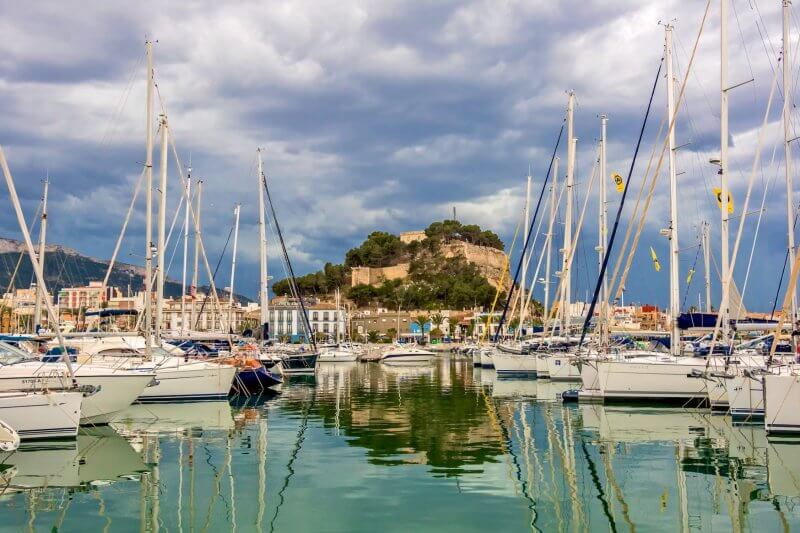Denia (Spain) is a picturesque old town, a significant port of the Mediterranean Sea, as well as a prestigious resort.
Denia is located in the province of Alicante, in the northernmost part of the Costa Blanca. The city is located at the foot of Montgo Mountain, with an area of 66 m2. This territory has a multi-ethnic population of 43,000 people.
Among travelers from Europe, this resort is so popular that during the peak season, the number of guests is 5 times higher than the number of local residents. The city of Denia in Spain attracts travelers with a pleasant climate, well-established infrastructure, well-equipped beaches, interesting sights and picturesque surroundings.
Important! Going to Denia, you need to remember that there is a more expensive holiday than in other resorts of the Costa Blanca and Spain.
Weather: when is the best time to arrive
Denia is located in a subtropical climate zone, where winters are mild and short, and summers are warm and long. Due to the fact that in the west this resort is surrounded by mountains, the coast is closed from cold air currents. This makes Denia one of the most comfortable places on the Costa Blanca.
The beach season here opens in June, when the air temperature is set at +26°C, and the water in the Mediterranean Sea heats up to +18 … 20°C.

The high season, when the maximum number of tourists come to relax by the sea, lasts from the beginning of July to the end of August. During this period, the air temperature is in the range of +28 … 35°C, and sea water +26 … 28°C. Rain is very rare in summer.
September is the time of the velvet season for beach lovers, because the air and sea are still warm. Air temperature +25 … 30°C, water temperature +25°C. Often there are short-term rains.
In the second half of October, it gradually gets colder, and in November the air is already cooler: +18°C. The rains are getting longer, hurricane-force winds are often blowing and the sea is stormy.
In December and January, dry and sunny weather, the average daily temperature is around +12 … 16°C. In February, the weather is unpredictable: it can be warm or rainy, windy and cold. At night, it is usually not lower than +10°C, during the day about +14°C.
In spring, the air gradually warms up from +16 °C in March to +21°C in May.
Beaches of Denia
Like all resorts in Spain, Denia attracts with its luxurious beaches, which can be considered a local natural attraction.

The wide (15-80 m) sandy strip of numerous beaches has a total length of 20 km, and it is almost continuous-recreation areas go in a continuous line one after another.
The beach strip of the northern district of Denia, Les Martinez, stretching north from the port, is covered with golden sand. The southern coast of Denia is more rocky, with a pebbly surface.
All beaches have showers, changing rooms and toilets, umbrellas and sun beds are available for rent, catamarans and water skis are available for rent, and small cafes are open.
One of the biggest advantages of a beach holiday at this resort is that even in the peak of the high season, you do not need to run to the sea early in the morning to find a suitable place.
The most popular beaches in Denia are (their length is shown in parentheses):
- Playa Nova (more than 1 km) – located near the port, the entrance to the sea is gentle.
- Punta del Racet (600 m)-is very close to the central part of the city, which is why it is always busier than the rest;
- Les Beauvetes (1.9 km);
- Molins – here you can rent a small yacht;
- L’Almadrava (2.9 km) – consists of two adjacent sections. One section with a sandy surface has a smooth entrance to the water, equipped with water attractions. The other section has a small pebble surface.
- Les Deveses (4 km) is a windy beach favored by fans of windsurfing and sailing.
- Arentes is located in the bay of Les Rotes, which belongs to the protected area, so there is no beach infrastructure there. But the water here is so clear that the sandy bottom can be seen in great detail. This place is popular with divers, but to dive, you need to have a permit from the municipality.
- Les Marineta Kasiana is a Blue Flag sandy beach. Equipped with playgrounds for sports and children’s games.
- Punta Negra.
Attractions
Even for those tourists who prefer a beach holiday to other activities, it will probably be interesting to walk along the city streets, get acquainted with the sights and take beautiful photos as a souvenir of their trip to Denia (Spain).
Castillo – Castle of Denia
This castle on a cliff in the middle of the city is the most famous landmark in Spain in Denia. Built in the XI century, only the remains of the powerful walls remain, but their appearance is impressive. No less impressive are the panoramic views of Denia and the sea coast, opening from the top of the cliff.
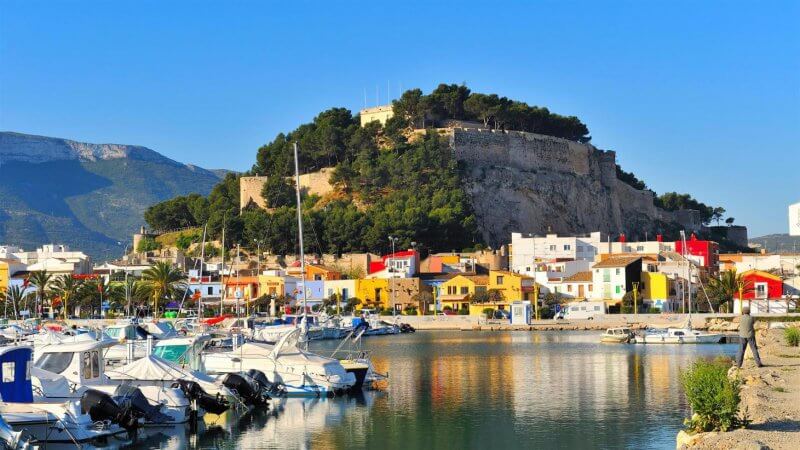
The former Governor’s Palace now houses the Archaeological Museum of Denia. In its 4 halls, there is an extensive exhibition that tells about archaeological finds in the immediate vicinity of the resort.
Entrance to the Castillo grounds and the Archaeological Museum is carried out on a single ticket, which costs 3 € for adults and 1 €for children from 5 to 12 years old.
You can visit the attraction at this time:
- November-March: from 10: 00 to 13: 00 and from 15: 00 to 18: 00;
- April-May: from 10: 00 to 13: 30 and from 15: 30 to 19: 00;
- June: from 10: 00 to 13: 30 and from 16: 00 to 19: 30;
- July-August: from 10: 00 to 13: 30 and from 17: 00 to 20: 30;
- September: from 10: 00 to 13: 30 and from 16: 00 to 20: 00;
- October: from 10: 00 to 13: 00 and from 15: 00 to 18: 30.
Castillo address: Carrer Sant Francesc, S / n, 03700 Denia, Alicante, Spain.
Old Town
The historic center is located at the foot of the cliff with the ancient castle of Denia, to the southwest of it.
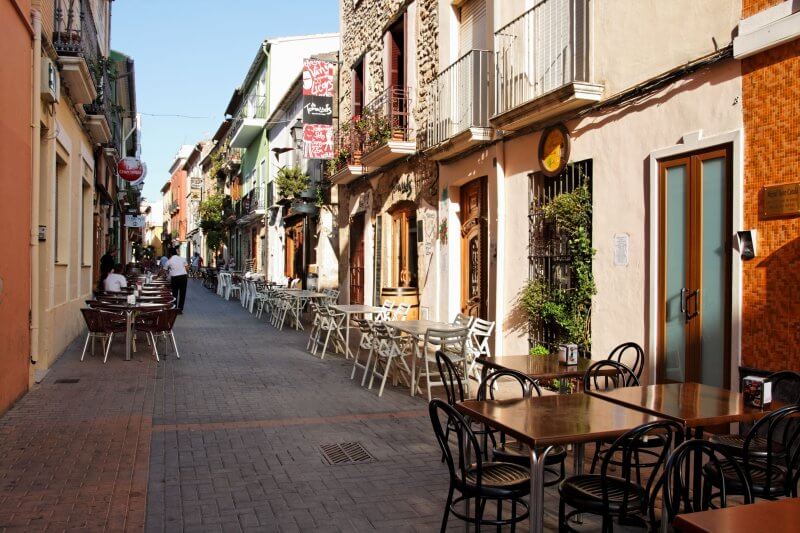
The old town consists of several blocks with narrow, crooked streets lined with stone, typical of medieval Spain. Buildings built in the XVI-XVII centuries, adjacent to the bourgeois buildings of the XVIII-XIX centuries. Among the neat terracotta and sand houses of various architectural styles, there are majestic temples and monasteries.
The most charismatic street in the Old Town is Calles Loreto. It starts at the foot of Castillo, where the town square is near the city Hall, then it goes past the Augustinian Monastery and ends in a luxurious alley with palm trees. On both sides of Calles Loreto are ancient low buildings, each of which is a unique attraction. These buildings are now home to shops, restaurants and tapas bars.
Marques de Campos Street
Against the background of the narrow streets of Denia Avenue Marquez de Campos looks especially wide. It is flanked on both sides by lush old plane trees that provide shade in the summer heat. Along the entire street there are tables of numerous street cafes. On Sundays, traffic is prohibited on Marquez de Campos – it is a romantic promenade where locals like to spend time.
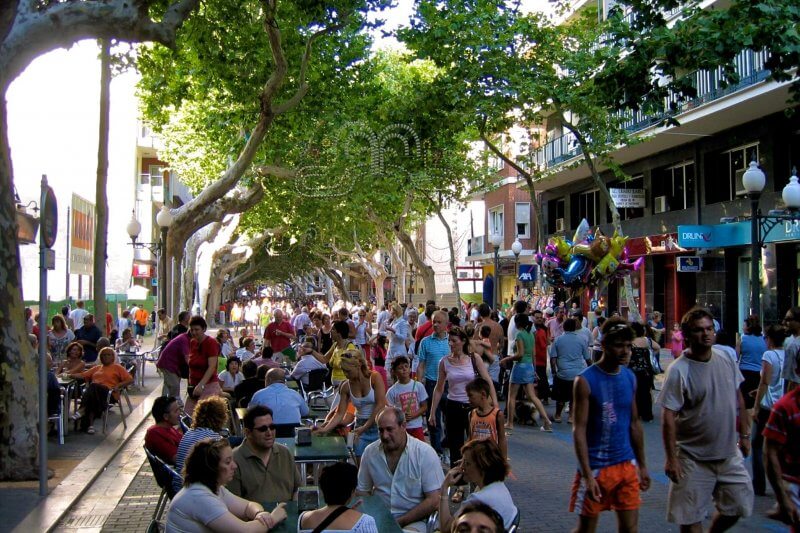
Interesting! Many tourists come to Denia especially for the festival Boules a la mar (“Bulls in the sea”), which is organized annually in the second week of July. After the bull race, these animals are released into the arena, equipped on the embankment, and try to lure them into the sea.
It is along the Marques de Campos Street that the bull run is organized during the Boules a la Mar festival.
Baix la Mar Fishermen’s Quarter
The fishing quarter is located on the outskirts of the Old Town, by the sea. This picturesque area, which can be called a special attraction of the historical center of Denia, was home to sailors, fishermen and merchants until the late 1970s.
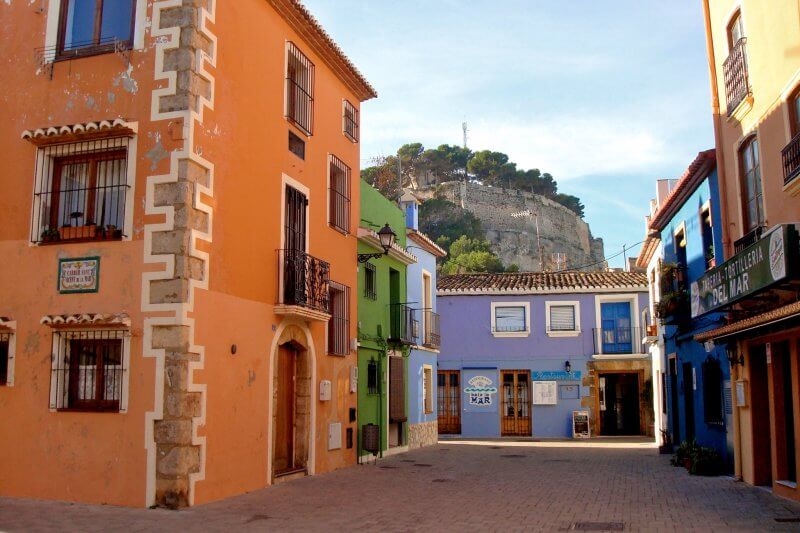
Old two-story houses on the territory of Baix la Mar are painted in bright, juicy colors, which gives the historical building of the XIX century an additional charm. Against the background of these buildings of the city of Denia in Spain, photos are especially effective, like postcards.
Waterfront at the port
The seaport is a colorful attraction, where travelers will find an impressive sight: berths with hundreds of commercial and fishing vessels, modest boats and luxury yachts. From here, passenger ferries leave for Majorca and Ibiza, as well as other resorts on the Costa Blanca.
On the south side of the port is another attraction: the city’s largest fish market with a huge selection of fresh catch.
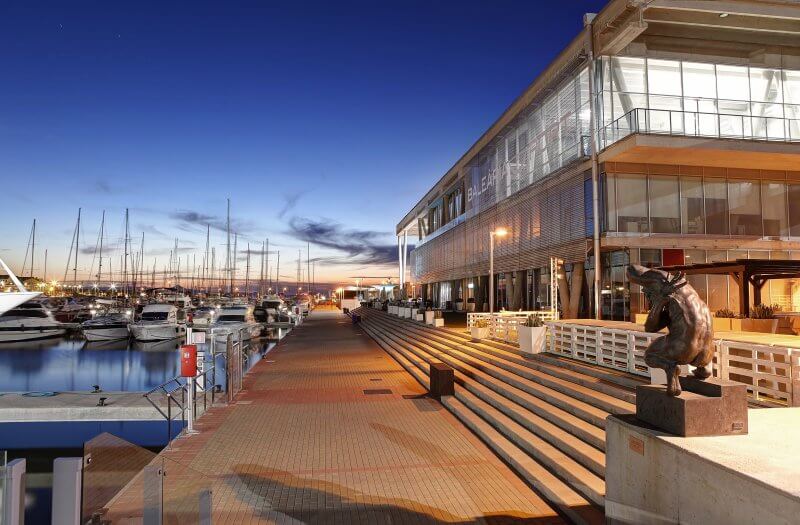
Marina el Portet de Denia is a nice area adjacent to the ferry pier, which is increasingly developing and becoming more popular. On the embankment there are shops and rental points with attributes for a variety of water sports, windsurfing training centers are open, numerous bars and restaurants are open, and children’s attractions are equipped.
For those who want to see as many sights as possible, there is a walking and running route to the lighthouse along the embankment.
Accommodation: prices and conditions
Although Denia is a provincial city and not too big, it is quite easy to choose temporary housing here. Especially a large selection of hotels of different classes in the northern regions – they are located in the depths of residential areas, and near the beaches along the coast. You can also find relatively cheap apartments there.
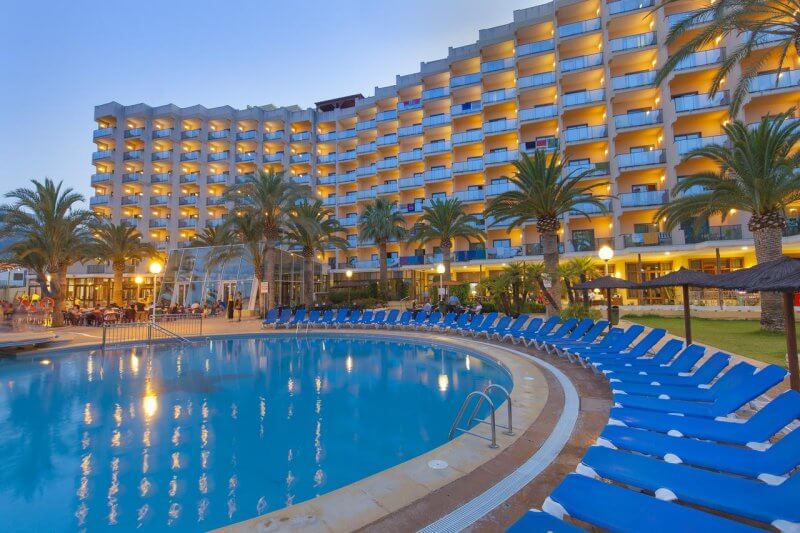
Estimated price for accommodation in the resort in high season:
- A double room in a 3* hotel can be found for both 90 € and 270 €, but usually the price is kept at 150 €.
- An apartment for a family or a group of 4 people can be rented for 480-750 €.
Important! When booking accommodation, you must specify whether the specified amount includes fees and taxes, or whether they need to be paid additionally.
How to get
Denia is located between two major cities in Spain, Valencia and Alicante, and is almost equally distant from them. Each of these cities has an airport that accepts international flights, and from there you can easily get to Denia.
Alicante to Denia by train
There is no train station in Denia, but there is a station where the “tram” arrives – it is something like an electric train, only it runs at a slower speed.
From Alicante, the tram departs from Luceros (underground station like in the metro), line L1. Departures take place at the 11th and 41st minutes every hour, and the journey time to Benidorm, where you need to make a transfer, is 1 hour and 12 minutes. In Benidorm, you need to go to the platform of the L9 line, from where trams depart hourly at 36 minutes to Denia, the road takes 1 hour and 45 minutes.
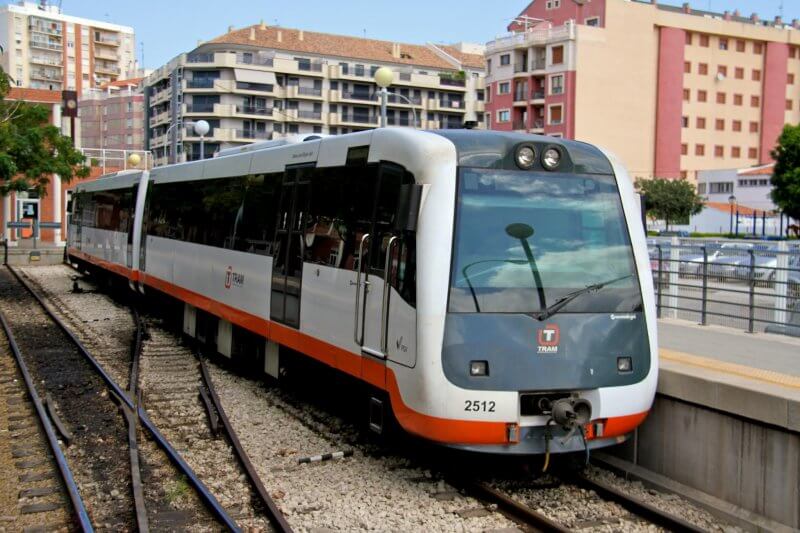
The entire road, including the transfer time, takes about 3 hours. Tram tickets are sold at the ticket office at Luceros station, for a total of €9-10 per trip.
The carrier’s website, where you can find out more information: http://www.tramalicante.es/.
A tip! To be able to enjoy the picturesque scenery, it is better to take a seat on the right side in the direction of traffic.
By bus from Alicate and Valencia
Getting to Denia from Valencia or Alicante (even from the airport itself) is convenient by bus, as there are direct connections between these cities.
Transportation is handled by ALSA. There are about 10 daily flights from Valencia and Alicante between 8: 00 and 21: 00. It is advisable to check the current schedule on the official website of the carrier www.alsa.es.
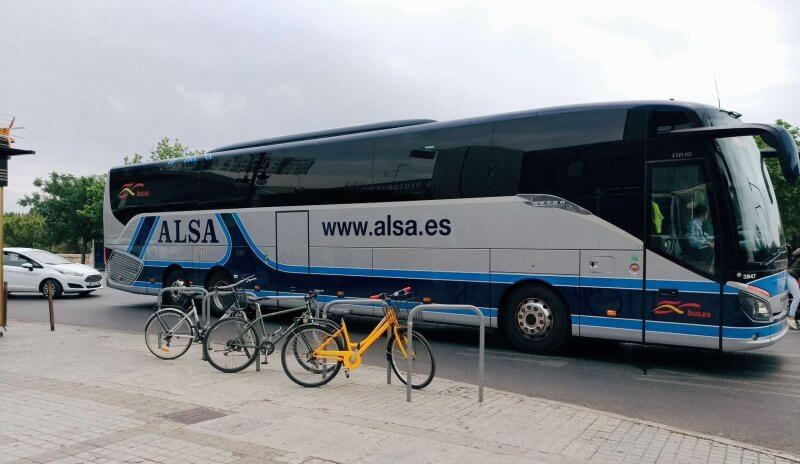
The ticket can be booked online on the same website, or purchased immediately before departure at the bus station ticket office. The fare is 11-13 €.
Travel time from Aliconte is 1.5-3 hours, from Valencia-about 2 hours-it all depends on the number of stops for a particular flight.
Conclusion
Denia (Spain) is just one of the many beautiful cities in the colorful country that attract the attention of tourists. Read new interesting articles on our website and make your own itinerary in Spain and other countries.

